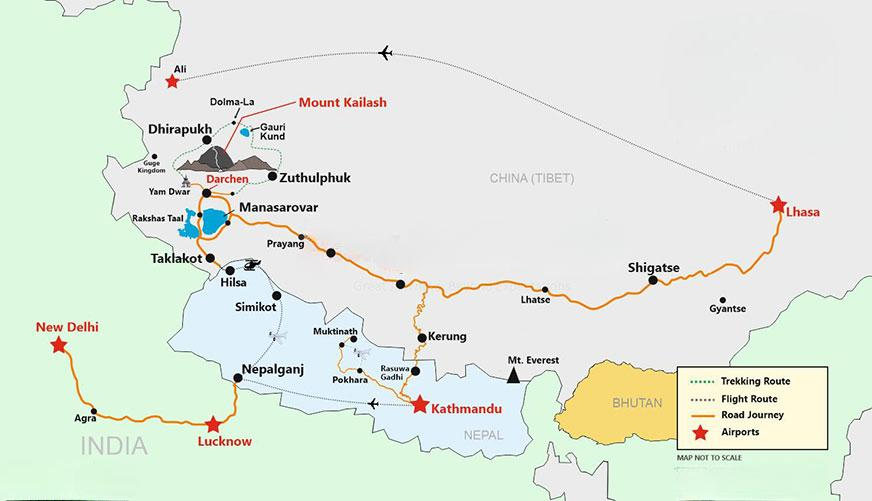Uttarakhand Switch to Hindi
Kailash Mansarovar Yatra
Why in News?
Indian and Chinese officials are stepping up efforts to finalise an agreement to resume the Kailash Mansarovar annual pilgrimage, which has been suspended since 2019.
Key Points
- About the Developments:
- The pilgrimage, suspended since 2020 due to the COVID-19 pandemic and border tensions, is set to recommence.
- Both nations have agreed in principle to resume direct air services, aiming to facilitate travel for pilgrims and strengthen people-to-people connections.
- Discussions are underway to resume the exchange of hydrological data and cooperation on trans-border rivers, enhancing mutual trust and collaboration.
- The year 2025 marks the 75th anniversary of diplomatic relations between India and China, providing an opportune moment to rebuild ties through initiatives like the Yatra.
Mount Kailash
- It is a diamond-shaped peak made of black rock, located in Tibet.
- India organizes the annually between June and September through the Lipulekh Pass (since 1981) in Uttarakhand and the Nathu La Pass (since 2015) in Sikkim.
- Mount Kailash stands at 6,638 meters and is considered a sacred peak by Hindus, Buddhists, Jains, and Bons (indigenous religion of Tibet).
- For Tibetans Buddhists, Kailash is the cosmic axis, or Mount Meru, connecting heaven and earth.
- In Hinduism, it is the abode of Lord Shiva and Goddess Parvati.
- In Jainism, Kailash is Ashtapada, where Rishabhanatha attained enlightenment.
- Mount Kailash is considered the spiritual center of the Earth, with the Sutlej, Brahmaputra, Kamali, and Indus rivers originating from it.
- Lake Mansarovar is located at the base of the mountain.
- Mount Kailash, though lower in height than Mount Everest (8,849 meters), remains unclimbed as its ascent is prohibited due to its sacred significance.






%20MPPCS%202025%20Desktop%20E.jpg)
%20MPPCS%202025%20Mobile%20E%20(1).jpg)










.png)
.png)











 PCS Parikshan
PCS Parikshan


